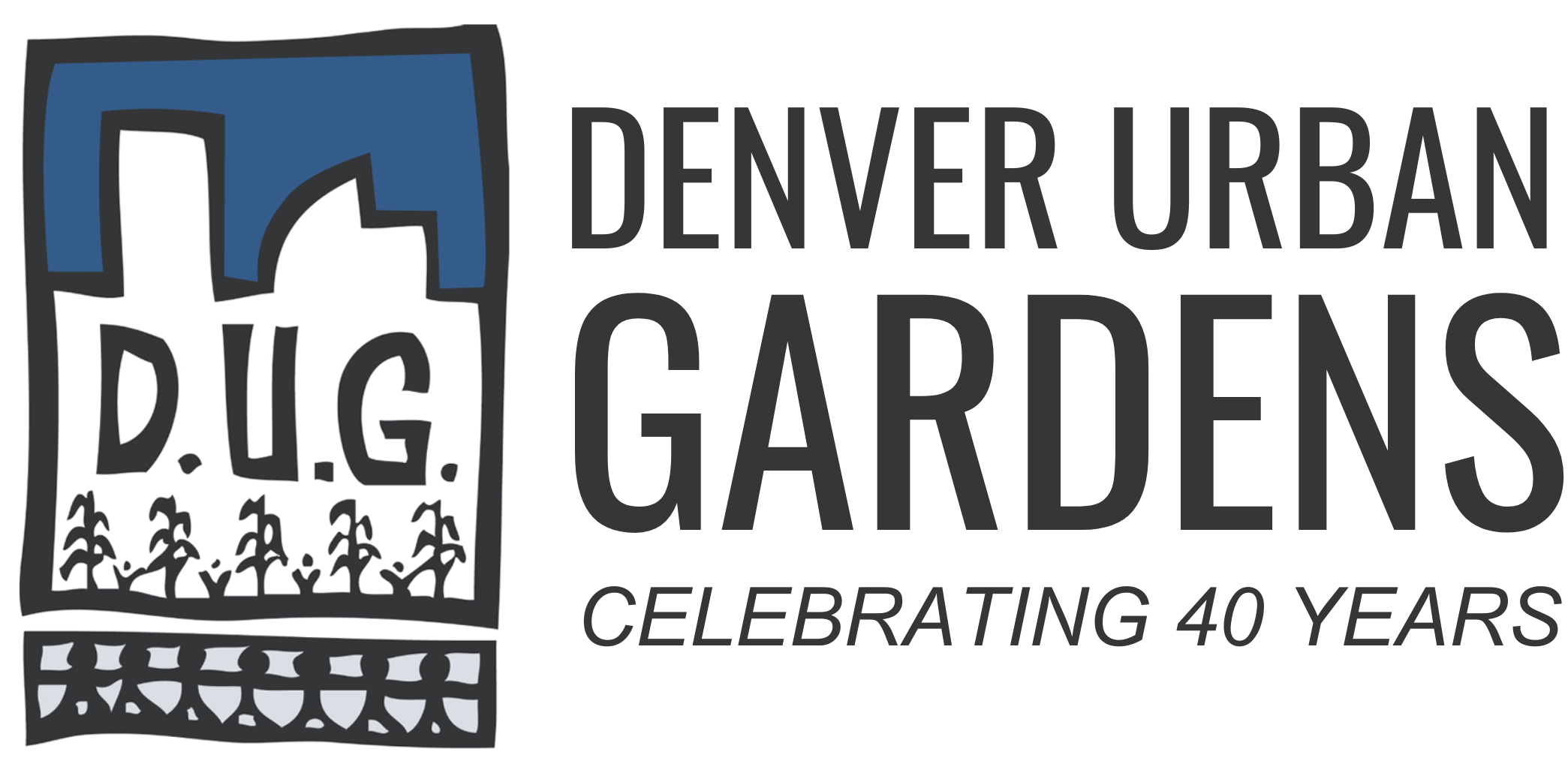What is a food forest?
For thousands of years, cultures worldwide have created unique food forests adapted to regional needs. They mimic the resilience of forests combining trees, shrubs, perennials, and some annuals. The diversity in sizes and ecological niches encourages the diversity of plants producing food, medicines and habitats, and reduces the need for intensive maintenance.
These food forests, designed as shaded oases of public access with techniques where water-friendly dryland crops thrive in a changing climate while they serve the community. With each new food forest, Denver Urban Gardens plants food-producing perennial plants in the common public spaces of the Denver Metropolitan Area. These forests are intended to be community-led, and receptive to neighborhoods, with DUG actively seeking new potential sites.
How to use this space
This is a place for food, exploration, education, and community. Explore, identify plants, learn about unfamiliar ones. Observe interactions among plants, insects, animals, and the environment, considering replicating such systems in your surroundings. Enjoy the space by picking ripe fruit to share with yourself or neighbors—it’s here for everyone’s enjoyment.
Harvesting
Take only what is ripe–it tastes better and won’t risk damaging the plant if you pick when the fruit is ready. If you’re not sure if a fruit is ripe, check the signage or look for indicators placed by Tree Keepers. Take only what you need or can share–many people use this space, and it’s important that we preserve it for others. If it looks like fruit is going to waste, let someone know so we can distribute it!
Who takes care of this space?
This space is managed by volunteer Tree Keepers, who keep the plants watered, pruned, and maintained in order to produce the best experience for visitors.
Pets
We love to have pets getting fresh air and exercise near our spaces, but please keep them on the outside edges of the food forest and remove their waste if they make any. This ensures that all of the food stays safe to eat.
New plantings
Keep an eye out for any new plants; they’re always being added to the food forest and are especially vulnerable to damage in the first year. They should have some kind of marking, but please step carefully as you explore.
Before you eat…
Not everything in the food forest is edible! Some plants are only for beauty or wildlife habitat, and there will always be plants and mushrooms that grow here without the knowledge of DUG or the Tree Keepers. Please be certain about your identification before you eat anything. Look to the signage or our website for more information.
‘Food forests’ are one of the most ancient forms of land stewardship, and we are expanding the idea of what an urban garden can be by planting food forests across metro Denver.
What’s in our Food Forests
DUG’s Etkin Family Foundation Food Forest Program was launched in the spring of 2022 with the goal of planting accessible food forests in small, underutilized areas in public spaces and community gardens.
24
479
135
624
Benefits of Urban Food Forests:
-
Stimulates community vitality through community-based cultivation of fresh fruits, nuts, and berries – a natural extension of the tried and true community garden model
-
Conserves resources and helps restore healthy ecosystems by capturing carbon, producing oxygen, enriching soil, and diversifying habitats
-
Enhances food access by making free, healthy fruits, nuts & berries available for ALL, especially urban-dwelling kids and adults who might not have access to green spaces or fresh, affordable produce
-
Promotes food sovereignty by giving people the land, resources and knowledge to grow their own
-
Provides widely documented mental health benefits associated with spending time in nature – reduces isolation, anxiety, depression etc.
-
Replace parasitic sod and grasses, ensuring our precious water is used wisely
-
Re-introduces heirloom and native species, helping Denver transition to climate-appropriate plants and trees
-
Attracts pollinators with biodiverse and climate-appropriate greens spaces, bolstering all life in the city
-
Reduces the heat island effect by helping to grow the urban canopy
-
Contributes to Denver’s compost system with discarded/past-date produce, providing the city with soil enriching inputs
Get Involved
Food Forestry Training
This is a hands-on and classroom-based, training course in designing, planting, and maintaining edible forest gardens in the urban setting.
Become a Tree Keeper
The role doesn’t require any previous experience with taking care of trees; you will be trained in pruning, pest management, and general tree health.
Volunteer with Us
Want to help out at one of our food forests? You can explore one-time volunteer workdays below or reach out to the Tree Keeper on food forest directory.


